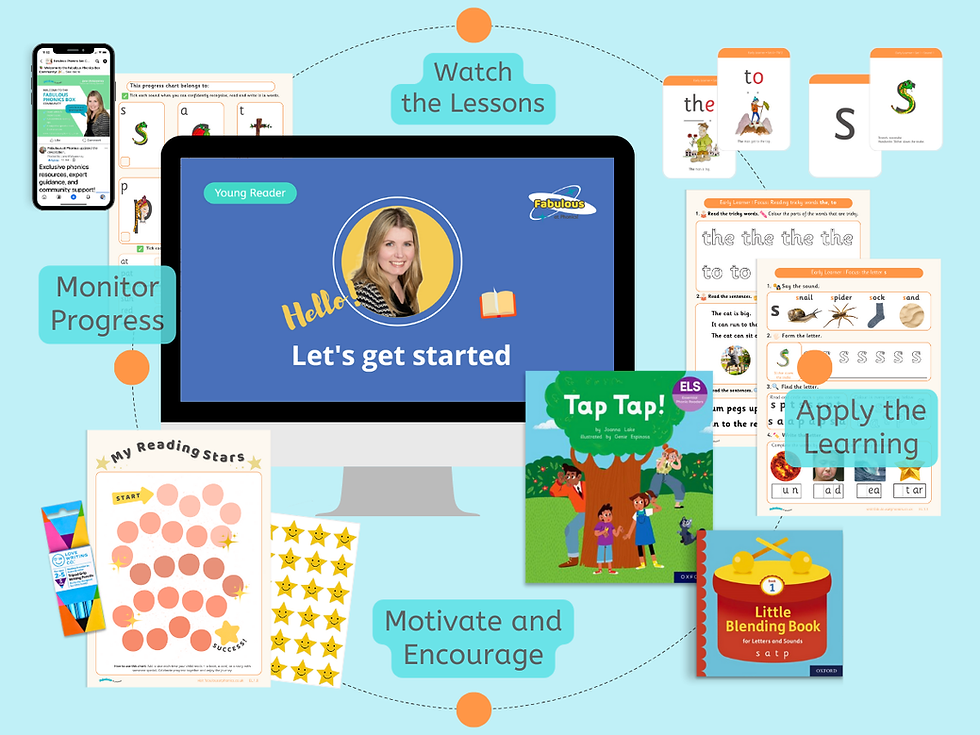Oral blending and segmenting
- Fabulous at Phonics!

- Nov 5, 2019
- 2 min read
Updated: Aug 24
The ability to segment words into sounds and the ability to blend sounds into words (oral blending and segmenting) are vital prerequisite skills for spelling and reading. Young children learning the English language initially perceive words as whole units, as their focus is meaning. They have to be explicitly taught that words are made up of a sequence of speech sounds (phonemes). Development of this understanding requires direct instruction, modelling, and lots of practice opportunities for breaking words apart into their component sounds and putting those sounds back together to form words. This blog post will talk about the steps involved in developing oral segmenting and blending skills and suggest activities you can use.
Follow a systematic sequence for teaching blending and segmenting activities to children. Use modelling to introduce the skills and guided practice as their mastery develops.
Begin with compound words (e.g., /snow/ -- /ball/). First have children repeat the components of a compound word slowly, and then put them together to form one word. As a next step, ask students to quickly repeat a compound word, and then to break the word into its component parts by repeating it slowly.
Next, move to syllables (e.g. /ev/ -- /er/ -- /green/). Following the above model, have children first put together syllables to create words, and then break words into syllables. Move from two syllable words to three, four, etc. Let children practice counting syllables by clapping or using their fingers to tap out the number of different sounds in a word.
Then, move to phonemes (e.g. /c/ -- /a/ -- /t/ ). Use pictures to develop children's blending and segmenting skills. Provide children with a picture (e.g. a cat) and have them sound out the name while placing marbles, drawing marks, or tapping their fingers for each of the individual sounds in the word (e.g. /c/.../a/.../t/ is composed of 3 sounds, thus the child would use 3 marbles, marks, or taps.) Move from consonant-vowel-consonant words (e.g. cat), to consonant-consonant-vowel-consonant words (e.g. flat).
Finally, when children are secure in phoneme/grapheme correspondence i.e. recognising the ways of writing down a phoneme, ask children to say a word, say it in sound-talk (individual phonemes), establish the number of phonemes in the word and find or write the letters and build the word.





Comments